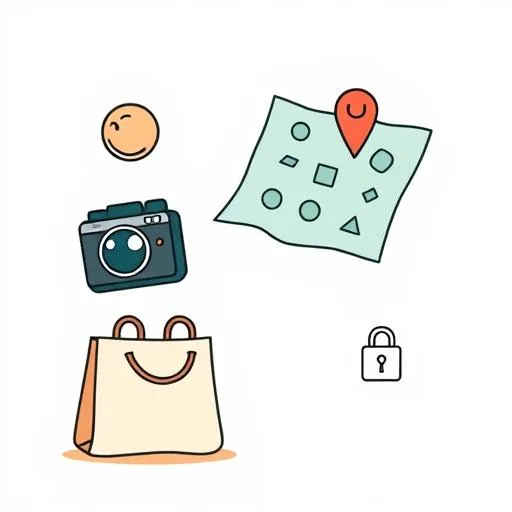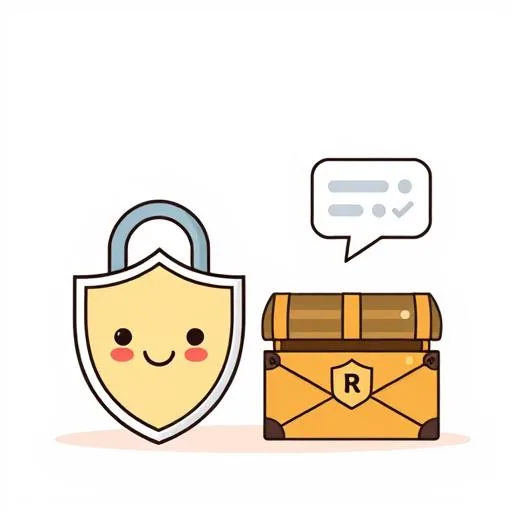
Remember when texts were just plain words? Now they’re bursting with photos, videos, and even little robot friends who chat back — and that’s just the start of something huge.
Messages That Feel Like Play: More Than Just Cute Pictures

Think about it: messages today aren’t just notes — they’re like mini-adventures. We’re seeing messaging evolve into something that’s alive with color, sound, and interactivity. Imagine a message popping up with a video of grandma blowing out birthday candles or a map pin leading right to our favorite park bench. Brands are jumping on this trend — the market for these richer messages is expected to hit $45.5 billion by 2033, growing steadily at 18% each year. Why? Because they work. Picture a simple shopping trip: a message might show clothes in action, not just static images, with one-click try-on options that feel like playing dress-up. But here’s where it gets real for us parents: what happens when our kids start spotting these dazzling messages? Suddenly, a “buy now” sticker isn’t just fun — it’s a lesson in curiosity versus impulse.
What if we turned this into playful learning? Next time you’re out, ask your little one: “Which message feels like it’s telling a story we can trust?” Spotting verified senders — those little badges showing a message is legit — becomes a treasure hunt. It’s not about fear; it’s about building their superhero skill of noticing what feels safe. And hey, when you send them a photo of their favorite snack with a silly voice note “Guess what’s hiding in my pocket?”, you’re weaving warmth into the very fabric of smarter tech.
AI Friends in Our Pockets: Cool Tool or Hidden Teacher?

Building on that playful vibe, let’s talk about those clever little chatbots that show up in messages. They’re not sci-fi anymore — they’re helping people book flights or check movie times in real-time, and businesses love them for how they make chatting feel personal and prompt. But for our kids, who’re growing up with voices that answer “Why is the sky blue?” before we even finish pouring juice, it’s a whole new playground. Here’s the spark: when AI responds instantly to questions, it feeds their natural “what if?” spirit. Picture a museum visit where a bot shares fun facts about dinosaurs through a text game — turning “boring” statues into roaring adventures!
Yet we’ve got to keep one foot in reality. Real connection sometimes means putting devices down and building forts out of couch cushions. Remember that rainy afternoon last month where you turned a cardboard box into a spaceship with nothing but markers and giggles? That’s irreplaceable. AI chats are fantastic tools, but they’re just that — tools. What truly matters are the slow, sticky-fingered conversations over half-melted ice cream where we’re fully present. Balance isn’t a chore; it’s making sure our kids know the difference between a bot’s quick answer and the warmth of Grandma’s hug.
Keeping It Real: Guarding Trust in a Supercharged World

With richer messages everywhere, teaching kids to spot what’s trustworthy becomes as essential as reminding them to look both ways before crossing the street. The good news? Businesses are already using verified features — like those little profile badges — to prove they’re the real deal, cutting down sneaky phishing tricks. That’s progress we can lean into! But for our family chats, it’s deeper: it’s about helping them trust their gut to ask, “Does this feel right?”
Here’s a simple game we play during snack time: I show two pretend messages — one from a bank with a verified logo, another with crazy emojis and “free candy!” promises. We talk through why we’d trust one and delete the other. No lectures, just munching on apple slices while building their confidence. And when tech feels overwhelming, I take a breath and focus on small joys: the way my child’s eyes light up sharing a drawing they made — not sent digitally, but held out in both hands. Those moments remind us: the strongest connections aren’t powered by algorithms. They’re powered by “I see you.”
Our Next Step: Growing Wonder, One Message at a Time

As messaging grows richer with AI magic and vibrant visuals, we parents get to shape how our kids experience it. Instead of worrying about the tech’s speed, let’s use its spark to ignite curiosity: “What’s something you wonder about after seeing that cool video?” Turn a chatbot’s weather update into a backyard cloud-watching picnic. The numbers show how rapidly this world is changing (with 5G rolling out globally), but your steady presence is the anchor.
I’m not sweating the billion-dollar market shifts. What thrills me is watching my child learn to question gently and connect deeply. So tonight, why not send a message that can’t be screenshared? Whisper a joke through the bedroom door or leave a sticky note treasure map for breakfast tomorrow. It’s in these small, tech-free moments that we build the unshakeable trust that no algorithm can replace. Because in the end, the most powerful message we’ll ever send isn’t flashy — it’s the quiet, consistent “I’m here” that builds unshakeable trust. And that never goes out of style.
Source: Rich Communication Services Growth Analysis Report 2025 | Market to Surpass $45 Billion by 2033, Driven by AI Chatbots, Verified Messaging, and Cloud Platforms, Globe Newswire, 2025/09/08
